21 F. high in the Twin Cities Friday.
25 F. average high for December 21
31 F. high on December 21, 2011.
8 hours, 46 minutes of daylight yesterday in the metro area. Worst day of the year to get a tan.
3 seconds of additional daylight today. Woo hoo!
Sun-Starved
One benefit to living on the tundra: our coldest
days are often sunny. No lake-effect gray. Many people I bump into are
more impacted by a lack of sun than winter chill. No wonder we light
candles and turn on holiday lights.
Yesterday's Winter Solstice brought 8 hours and
46 minutes of daylight. Yep, we're still standing. Today: daylight will
be 3 seconds longer. We pick up over 4 minutes by December 31, 36
minutes within a month.
Our coldest weather usually comes the 3rd week
of January, but I still don't see any widespread subzero weather for the
metro, looking out 2 weeks. A typical winter (?) brings an average of
30 subzero nights. My gut: maybe 4-6 nights below zero this winter,
contining a trend we've seen in recent decades.
No weather drama for us looking out into early
January: mid-20s today, then colder tomorrow as the latest clipper
exhales teens south of the border. Christmas looks cold, but dry - long
range models hinting at a couple inches of snow on Friday.
If anyone asks (doubtful) 46.9 percent of
America is snow-covered. 20 inches of snow near Madison! We'll get our
white Christmas, just barely.
No thaws in sight, but the days are getting longer now.
What Happens At The Solstice? Well, the world doesn't necessarily end, for one. Here's a good explanation from
timeanddate.com: "
The
December solstice occurs when the sun reaches its most southerly
declination of -23.5 degrees. In other words, it is when the North Pole
is tilted 23.5 degrees away from the sun. Depending on the Gregorian calendar,
the December solstice occurs annually on a day between December 20 and
December 23. On this date, all places above a latitude of 66.5 degrees
north (Arctic Polar Circle) are now in darkness, while locations below
a latitude of 66.5 degrees south (Antarctic Polar Circle) receive 24
hours of daylight. Use the Sunrise and Sunset calculator
to find the number of daylight hours during the December solstice in
cities worldwide. The sun is directly overhead on the Tropic of
Capricorn in the southern hemisphere during the December solstice. It
also marks the longest day of the year in terms of daylight hours for
those living south of the equator. Those living or travelling south
from the Antarctic Circle towards the South Pole will see the midnight
sun during this time of the year..."
Solstice Trivia. Yesterday was the Winter Solstice,
the shortest daylight of the year. Today we pick up 3 seconds of
daylight, 4 minutes and 9 seconds of additional daylight by December 21.
For the record, MSP has lost about 6 hours and 50 minutes of daylight
since the Summer Solstice, on June 21. Thanks to D.J. Kayser at
WeatherNation TV for passing this along.
2012: probably the warmest on record for the USA; 8th warmest worldwide.
July: hottest month in record-keeping U.S. history, averaging 77.6 degrees. Over the year, more than
69,000 local heat records set in 2012 in the USA —
including 356 locations in 34 states that hit their highest-ever
temperature mark. Source:
AP and NOAA.
2,300 U.S. counties declared Agricultural Disaster Areas this year, due to extreme drought, the worst since 1956.
9.2 million acres of land burned in 2012, roughly the size of Maryland - 3rd largest area since 1960.
5 countries set all-time heat records in 2012; no all-time cold records were observed.
18% Summer sea ice in the Arctic dropped 18% from
its previous record. Some scientists report close to an 80% drop in sea
ice volume in the last 30 years.
Book It: 2012, The Hottest U.S. Year On Record. Here's an excerpt from
Climate Central: "...
Last
week NOAA announced that 2012 was “likely” to be the warmest year on
record in the 48 states, based on temperatures through November. At
some point, however, likelihood turns into certainty. Does a warm
December push the nation to the point where it is impossible for 2012 to
be anything but the warmest year ever recorded in the U.S.? To answer
that question Climate Central did the math, and the results are in.
- There is a 99.99999999 percent chance that 2012 will be
the hottest year ever recorded in the continental 48 states, based on
our analysis of 118 years of temperature records through Dec. 10, 2012...."
A Very White Christmas. NOAA data shows some 18-12"
snowfall amounts from Thursday's blizzard in the Madison, Wisconsin area
- as much as 15-18" just south of Eau Claire.
USA Snow Cover. As of Friday morning 46.9% of the USA had some snow on the ground, up from 5.4% on November 21, 2012. Map above courtesy of
NOAA.
Cold, But Not Quite Bitter. Today will be the
"mildest" day in sight (mid to upper 20s), northwest winds pumping
colder air into Minnesota tomorrow, setting the stage for a chilly
Christmas. In fact temperatures Christmas Day will be stuck in single
digits north and low teens south. The next chance of accumulating snow?
Late Friday into Saturday - maybe a couple of inches. Too early to get
specific.
Christmas Day. The map above shows the
ECMWF (European) solution for 18z Tuesday; heavy rain and possible
T-storms from Houston to New Orleans and Mobile, heavy, windswept rain
for the Pacific Northwest and wet snow for Maine and Massachusetts -
otherwise a fairly dry, chilly Christmas Day from coast to coast. Map:
WSI.
A Little Snow A Week From Today? Keep your
expectations low - do not get your hopes up. We're in a prolonged
drought, and it's showing up in snowfall totals and storm track trends
(most of the big storms detouring south and east of Minnesota). WSI's
ECMWF model shows a little light snow brushing southern Minnesota next
Saturday, the best chance of a couple inches south/east of MSP.
Mad-Town Lives Up To Its Name. Matt Porcelli sent in
this photo of the snowy craziness in Madison, Wisconsin. At one point
Thursday heavy snow was accompanied by thunder and lightning. It must
have looked like the (snowy) End of the World.
Graphic courtesy of
TVSpy.
Where's The Hot Tub? Thanks to Shannon Kreuziger, who snapped this photo of (2 feet?) of snow near Portage, Wisconsin.
Good Grilling Weather. Emily Rice snapped this photo in Madison Thursday. Perfect weather for steaks and burgers!
Snowy Panorama. Katelynn Matheny took this photo
near Madison Thursday morning, just as the heaviest snow was moving in.
Thanks to WeatherNation TV for providing all the pics.
Drought Update. Here's an excerpt from Mark Seeley's weekly
WeatherTalk Newsletter:
"The weekly Drought Update (Dec 18) from Brad Rippey with the USDA
World Agricultural Outlook Board includes the following comments:
- There was another small drop less than one-tenth of a percentage
point in overall U.S. drought coverage, from 61.87% last week to
61.79% on December 18.
- However, the portion of the contiguous U.S. in the worst category
D4, or exceptional drought crept upward to 6.64%, the greatest U.S.
coverage since November 22, 2011.
- Hay in drought (64%), cattle in drought (73%), and winter wheat in drought (63%) were all unchanged from the previous week.
- Hay in drought has been at or above 60% and cattle in drought has
been greater than two-thirds of the domestic inventory for 24
consecutive weeks (July 10 December 18).
- On the central Plains, winter wheat benefited from widespread snow on
December 19. Any improvement in the central Plains’ drought situation
will be reflected next week.
* the latest U.S. Drought Monitor information from NOAA is
here.
2012: Second Costliest Year For Weather Disasters? Between
the drought (worst since 1956 nationwide) and "Sandy" damage should
easily go over $100 billion. Here's an excerpt from
USA Today: "
Led
by the devastation from Hurricane Sandy and the Midwest drought, 2012
will likely be the second-costliest year for weather and climate
disasters on record, according to data released today by the National
Oceanic and Atmospheric Administration. The costliest year for damages
in the USA was 2005, when four hurricanes lashed the nation, including
Katrina. The USA has endured 11 separate weather and climate disasters
so far this year that led to damages of at least $1 billion, NOAA
reported today. This follows 2011, when an all-time record of 14
separate billion-dollar disasters were reported..."
Photo credit above: "
The Casino Pier's wrecked Jet Star
roller coaster in Seaside Heights, N.J., Nov. 28, 2012. A month after
Hurricane Sandy wreaked havoc along the Jersey Shore, the area is slowly
starting to recover." (Fred R. Conrad/The New York Times)
349 Americans lost their lives due to extreme weather so far in 2012, 131 of them in Hurricane Sandy. Source: NOAA.
Duluth-Superior Ski Hills Seed Clouds With Snow. I've seen this phenomenon show up in the metro area, when atmospheric conditions are ideal.
The Duluth News Tribune has more details: "...
He’s
not certain exactly what happens, but Packingham said the snowfall is
not simply snow from the snowmaking machines blowing into town.
Conditions had to be just right; the temperature at about 20 degrees
and a light southwesterly wind, he said. Too much wind or temperatures
too warm or too cold and the particles wouldn’t have made it up to the
clouds. Packingham said he thinks tiny particles from the snowmaking
machines drifted up into low-hanging clouds, in effect seeding the
clouds, spurring snowfall downwind of the ski hills for more than a
mile. That’s farther than falling snow can blow from those machines, he
said..."
Suddenly There's A Meadow In The Ocean With "Flowers" Everywhere. Here's a clip of a terrific story from Robert Krulwich at
NPR: "
It
was three, maybe four o'clock in the morning when he first saw them.
Grad student Jeff Bowman was on the deck of a ship; he and a University
of Washington biology team were on their way back from the North Pole.
It was cold outside, the temperature had just dropped, and as the dawn
broke, he could see a few, then more, then even more of these little
flowery things, growing on the frozen sea. "I was absolutely
astounded," he says. They were little protrusions of ice, delicate,
like snowflakes. They began growing in the dry, cold air "like a meadow
spreading off in all directions. Every available surface was covered
with them." What are they?..."
Christmas Backyard Memories. Thanks to my friend,
Tom Oszman, at TC Media Now (who oversees the most extensive clip of
local TV newscasts in Minnesota going back many decades) for passing on a
few snippets from 1986. Reindeer in the KARE-11 Backyard:
http://tcmedianow.com/video/kare-news11-at-5-from-december-8-1986-paul-magers-kirstin-lindquist-paul-douglas-and-jeff-passolt/
That same evening at 6 pm:
Feels Like December. Temperatures were a few degrees
below average yesterday, but at least the sun was out. Highs ranged
from 10 at Redwood Falls to 18 St. Cloud and 21 in the Twin Cities.
Random Photo Of The Day. A friend sent me this yesterday. No idea why I'm including it in today's blog. Boredom?
Paul's Conservation Minnesota Outlook for the Twin Cities and all of Minnesota
TODAY: Plenty of sun, not bad at all. Winds: S 5-10. High: 26
SATURDAY NIGHT: Partly cloudy. Low: 12
SUNDAY: Partly sunny, turning colder again. High: 20
CHRISTMAS EVE: Patchy clouds, chilly - probably dry. Low: 11. High: 21
CHRISTMAS DAY: Frostbite risk for Santa? Chilled sunlight. Low: 6. High: 16
WEDNESDAY: More sun, still brisk. Low: 3. High: 17
THURSDAY: Blue sky, good travel conditions. Low: 9. High: 23
FRIDAY: Clouds increase. Light snow possible Friday night. Low: 14. High: 25
SATURDAY: A period of light snow - light accumulation possible. Low: 18. High: 27
Climate Stories....
“If you do not change direction, you may end up where you are heading...” - Lao Tsu, 550 B.C.
Climate Story Of The Year: Extreme Weather From Superstorms To Drought Emerges As Political, Scientific Gamechanger. Here's an excerpt from
Think Progress: "
This
year brought staggering weather extremes, record loss of Arctic ice
and a growing body of scientific analysis linking the two. Those
extremes, plus Superstorm Sandy, raised public concern about the
immediate threat posed by climate change, providing a palpable debunking
of the (mistaken) belief that climate change will impact only future
generations or people in faraway lands. The superstorm — which
scientists explained was made far more destructive by manmade climate change – hit the media where it lives and may have been a game changer for many of them, as the Bloomberg Businessweek cover suggests..."
Global Catastrophes In Perspective. Here's an excerpt of a terrific TED Talk, from climate scientist Mark Boslough at
Huffington Post: "...
One
way to compare various threats is to determine how many people die, on
average, every year. We can use a theoretical number, based on
calculations, for asteroids, and compare it to numbers compiled by the
World Health Organization. Here's the resulting table, based on one in Defending Planet Earth:"
| Cause |
|
Expected Deaths Per Year |
| Shark attacks |
|
3-7 |
| Asteroids |
|
91 |
| Firearms accidents |
|
2,500 |
| Earthquakes |
|
36,000 |
| Climate Change |
|
150,000 |
| Malaria |
|
1,000,000 |
| Traffic accidents |
|
1,200,000 |
| Air pollution |
|
2,000,000 |
| HIV/AIDS |
|
2,100,000 |
| Tobacco |
|
5,000,000 |
"
Asteroids and climate change are the only two threats in the table
that can have abrupt and global consequences, and to which everyone on
the planet is exposed, regardless of their lifestyle or personal
behavior. In principle, they are both preventable. In both cases
mitigation would require international agreements and cooperation. But
would such collaboration even be possible if a threatening asteroid
were discovered, or would we be bogged down in the same kind of denial
and obstruction that has prevented action on climate change?..."
Drought, Icemelt, Superstorms: A Review Of 2012's Environmental News.
The Guardian has a good summary of yet another crazy year, in the U.S and the U.K. Here's an excerpt: "...
By
June it was clear that Arctic sea ice was melting faster than usual.
But ice scientists and environment groups were shocked when the 2007
record low extent was passed on 9 September, and a further 500,000sq km
of ice was lost before it reached its lowest ever point of 3.41m sq km
– 18% less than the previous record – on September 16.
What worried scientists was that there had not been any major storms or
oceanic events to break the ice up more than usual. The National Snow and Ice Data Centre (NSIDC)
in Boulder, Colorado, along with other satellite ice monitoring
organisations in Japan and Norway, attributed the record loss to rapid
warming in the Arctic and a continuing loss of older, thicker ice. "We
are now in uncharted territory," said NSIDC director Mark Serreze...."
Image courtesy of
retronaut.com.
2012: Another Record-Setter, Fits Climate Forecasts.
Maybe the professional deniers aren't looking at the same data I am -
we've had 2 years of some of the most extreme weather ever recorded, not
just in the USA but worldwide. Here's a summary of the atmospheric
craziness from
AP: "...
This
past year's weather was deadly, costly and record-breaking everywhere —
but especially in the United States. If that sounds familiar, it
should. The previous year also was one for the record books. "We've had
two years now of some angry events," said Deke Arndt, U.S. National
Climatic Data Center monitoring chief. "I'm hoping that 2013 is really
boring." In 2012 many of the warnings scientists have made about global
warming went from dry studies in scientific journals to real-life video
played before our eyes: Record melting of the ice in the Arctic Ocean.
U.S. cities baking at 95 degrees or hotter. Widespread drought.
Flooding. Storm surge inundating swaths of New York City..."
Map: NOAA, National Climatic Data Center.
Goodbye New York, Hello Minneapolis. I've gone on
record speculating that climate change will probably wind up being a
good thing, overall, for my home state of Minnesota. We have amazing
water resources, and most of the computer models show the worst drying
taking place south and west of Minneapolis - St. Paul. That's the one
big wild card: will we wind up wetter or drier? Here's an interesting
video clip from
The Economist: "
WILL
parts of Manhattan be left by people seeking higher, dryer ground? In
the aftermath of another UN climate conference, our correspondents
discuss migration and adaptation."
WSJ's "Climate Dynamite" Is A Dud. I like the Wall
Street Journal. I'm a subscriber, in fact. But when it comes to climate
change and their editorial pages they're seriously out to lunch by not
acknowledging the science. Here's a review of a recent WSJ post that
diminished the perceived risk caused by a warming planet, from
Media Matters: "
In a Wall Street Journal op-ed, Matt Ridley attempted
to cast doubt on the severity of manmade climate change, arguing that
future warming will be modest and "good" for the planet. But experts
say the author flubbed the science, and continue to project that the
earth will warm between 2 and 4.5 degrees Celsius (or about 3.5 to 8
degrees Fahrenheit), unless mitigating action is taken. Ridley's
argument goes something like this: climate models are "unproven."
Therefore, it is now possible to rely solely on "observations" -- which
show that temperatures are "no higher than they were 16 years ago"--to
determine that a doubling of atmospheric carbon dioxide by the end of
the century would cause modest warming. Further, that amount of warming
would be a "net good." Putting aside the fact that Ridley cites a
"semiretired successful financier" and an unnamed scientist to support
his claims, his arguments are not well-founded. Or, as John Abraham, an IPCC reviewer and the director of the Climate Science Rapid Response Team,
put it to Media Matters: the column "has such elementary errors in it
that [it] casts doubt on the author's understanding of any aspects of
climate change....."
Error-Riddled Matt Ridley Piece Lowballs Climate Change, Discredits Wall Street Journal.
World Faces 10F Warming. Here's another retort to the WSJ "story" from Joe Romm at
Think Progress: "
Every
major projection of future warming makes clear that if we keep
listening to the falsehoods of the anti-science crowd and keep taking no
serious action to reduce carbon pollution we face catastrophic 9°F to
11°F [5°C to 6°C] warming over most of the U.S. (see literature review here). The Wall Street Journal, however, has published a piece,
“Cooling Down the Fears of Climate Change,” that (falsely) asserts
observations suggest global warming will be so low as to “be
benificial.” This risible piece by Matt Ridley is so riddled with basic
math and science errors it raises the question of how the Journal can
possibly maintain its reputation as a credible source of news and
financial analysis. Ridley and the Journal apparently don’t know the
difference between water vapor and clouds. They don’t understand the
basic concept of climate sensitivity. And they can’t do simple math.
Naturally, the climate deniers have embraced this nonsense and spread
it across the internet..."
Graphic credit: "
Projected warming even with (an unlikely) low climate sensitivity of between 1.5°C and 2.0°C from Michael Ring et al 2012. A WSJ op-ed that cites this work absurdly concludes “Evidence points to a further rise of just 1°C by 2100.” Not even close."
Scientists Respond To The Wall Street Journal's Latest Junk Science Climate Predictions.
The WSJ is rapidly losing credibility, at least when it comes to
peer-reviewed science. Climate Science Watch has the latest rebuttal
here.
Notice Any Trends? Many people are fixated on the
aerial coverage of ice, when volume may be a better determination of
what's really going on at the top of the world. The graphs above show
volume
of Arctic Ice, which has dropped an estimated 80% in recent years. We
set a record minimum for Arctic ice in September of this year; the
previous 6 years have seen the lowest ice levels ever observed. 2013
predictions show a projected decrease of 2,000 cubic kilometers of ice.
Source
here.
How Bad Will Climate Change Get For The Eastern U.S.? Look At These Crazy Maps. Here's an excerpt from a story at
theatlanticcities.com: "...
This latest data comes from a recent study, published in the journal Environmental Research Letters,
which used a high-resolution climate modeling system to project bad
news down to an impressively local level, examining what we might see
in the 20 largest cities east of the Mississippi come the late 2050s.
By then, researchers from the University of Tennessee at Knoxville have
calculated, heat waves in New York City could be 3.58 degrees Celsius
hotter in intensity than they are now, with the average one lasting
nearly two days longer (these projections are compared to a baseline of
climate data between 2001 and 2004). Cleveland has it the worst, with a
heat wave temperature increase of 3.71 degrees Celsius, followed by
Philadelphia (3.69). The researchers project that heat waves will grow
worse particularly across the Northeast and Midwest, bringing the North
and South to roughly equal hot-weather fates..."
Link Found Between Global Warming And Volcanic Activity. This one made me do a triple-take; here's an excerpt from
gizmag.com: "
It’s
no secret that volcanic eruptions can cool the planet by spewing ash
and droplets of sulfuric acid into the atmosphere that obscure the sun.
Now researchers at Germany’s GEOMAR Helmholtz Centre for Ocean
Research Kiel and Harvard University have found evidence that suggest
the reverse could also be true. The researchers have discovered a strong
historical link between global temperature increases and increases in
volcanic activity..."
Photo credit above: "
Researchers have discovered a strong historical link between global temperature increases and increases in volcanic activity." (Photo:
Shutterstock)
Global Warming Experts Should Think More About The Cold War. Here's an excerpt of a thought-provoking article from
Bloomberg.com: "
Every
year the United Nations convenes diplomats from more than 190 nations
to negotiate a climate change treaty, and in many years negotiators go
home with little more than the promise of another annual meeting. After
the failure of the 18th such event earlier this month in Doha,
diplomats and organizers should focus less on the UN exercise than on
combing history for a more suitable model. They might find at least
three lessons from the history of arms control..."
A 10 Year Old's Reflections On Global Warming. Here's an excerpt from a story at
Mother Nature Network: "
A
few weeks ago, my daughter was assigned to write an essay for her
fourth-grade class about an issue that she felt was worth speaking up
about. The topic she chose was global warming. As the daughter of a
greenie, this was not surprising to me. She has been hearing about
environmental issues in general since the first time I read "The Lorax"
to her as an infant. Still, contrary to what some might think, I try
not to harp on eco-issues too much at home. My kids are taught to
recycle and turn off the faucet while brushing their teeth. They know
littering is a no-no. But we have never before sat down and had a frank
conversation about global warming. So what did surprise me about her
essay was her understanding of the issue and the importance of doing
something about it...."

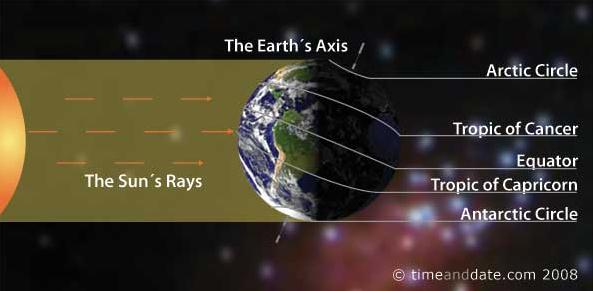


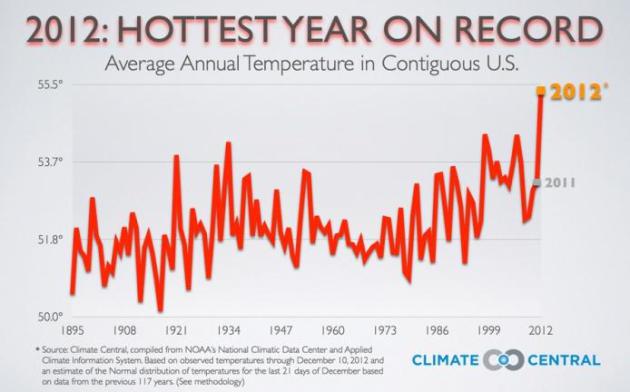

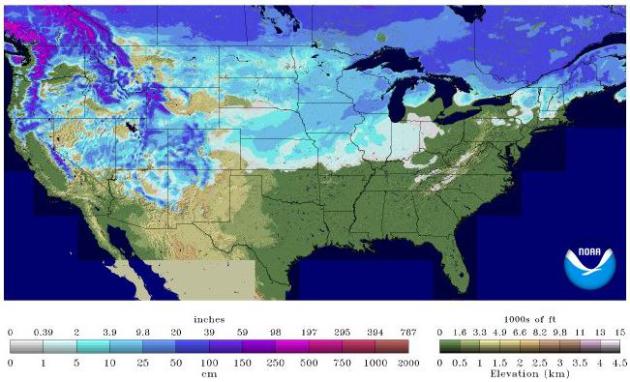




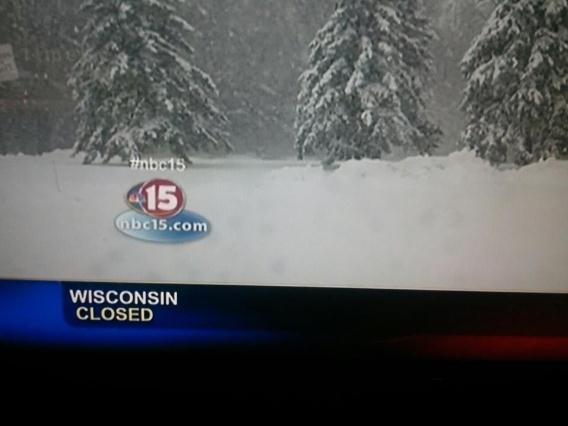



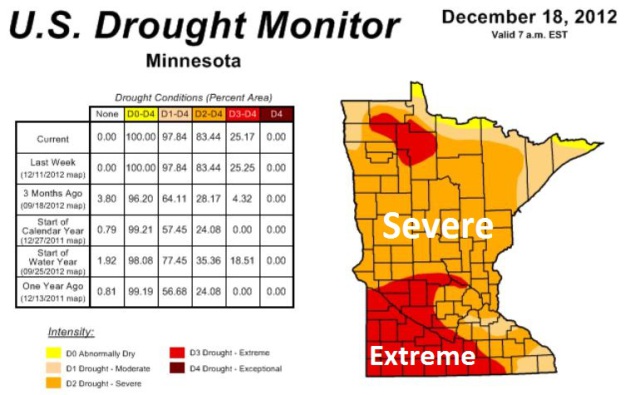
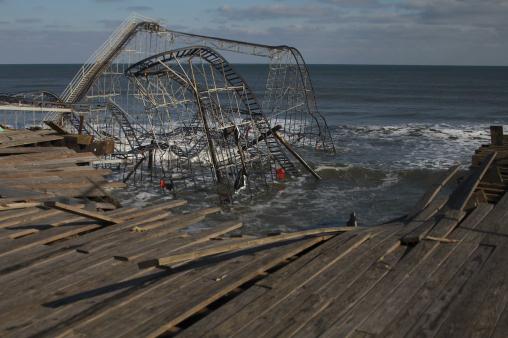
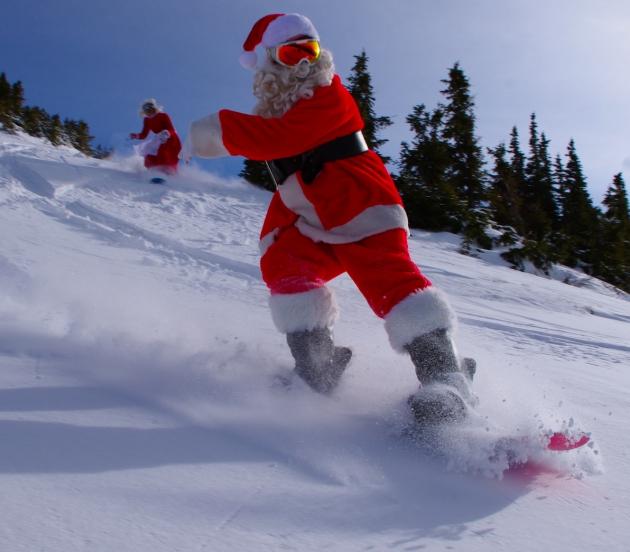




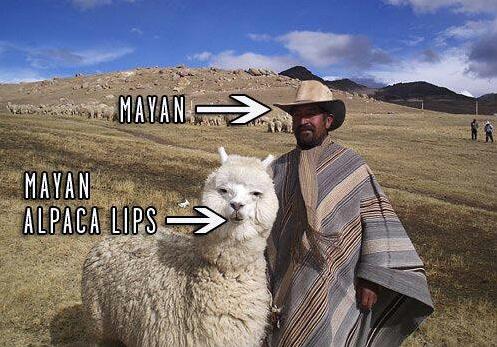

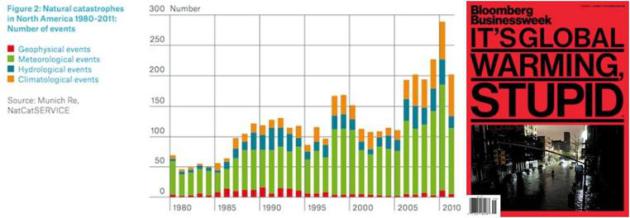

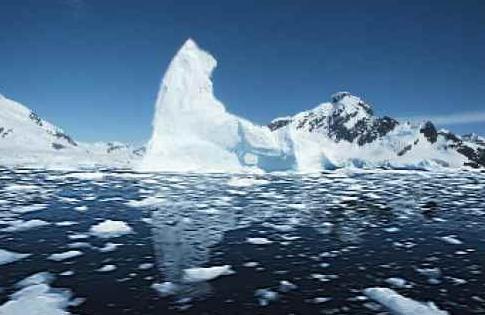
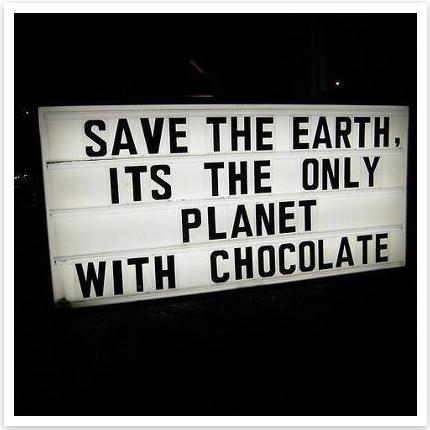
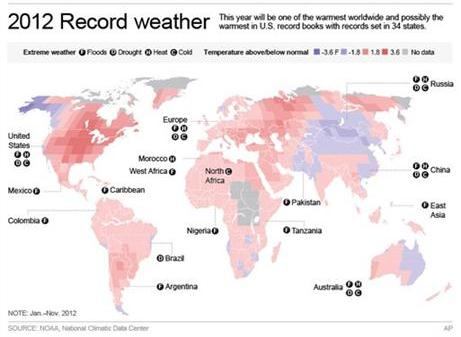
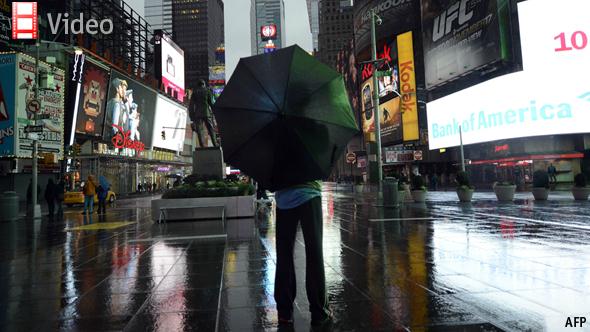
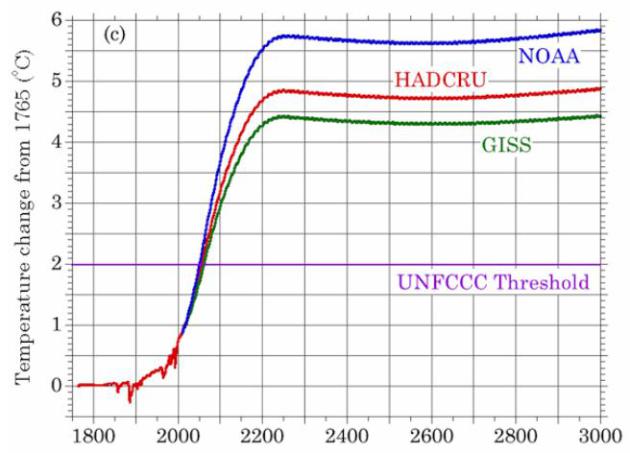

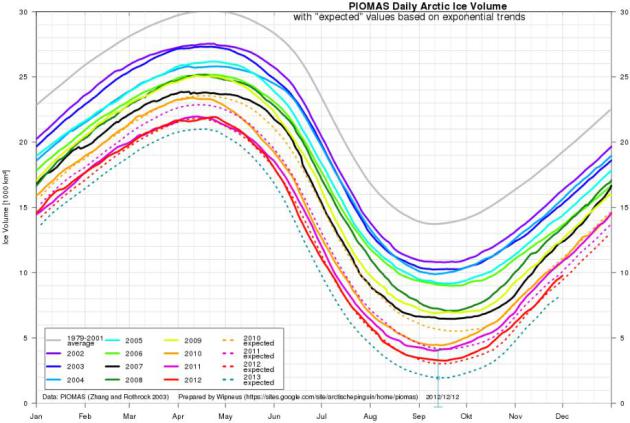
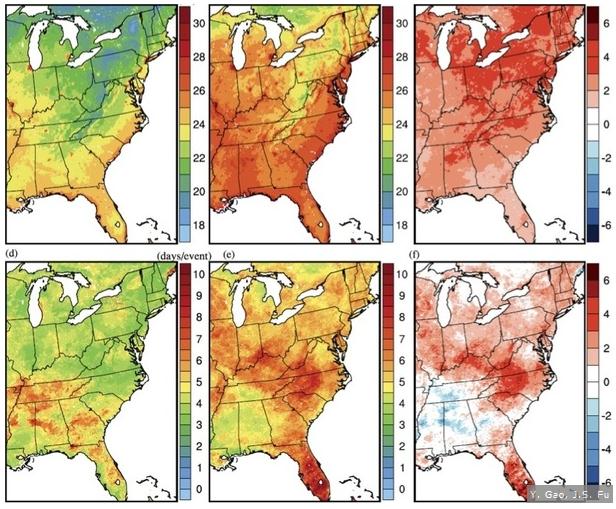

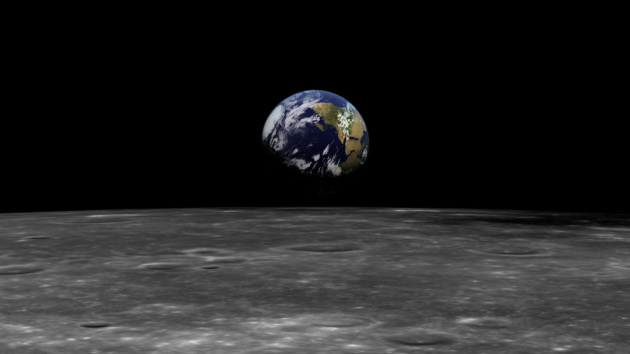

No comments:
Post a Comment